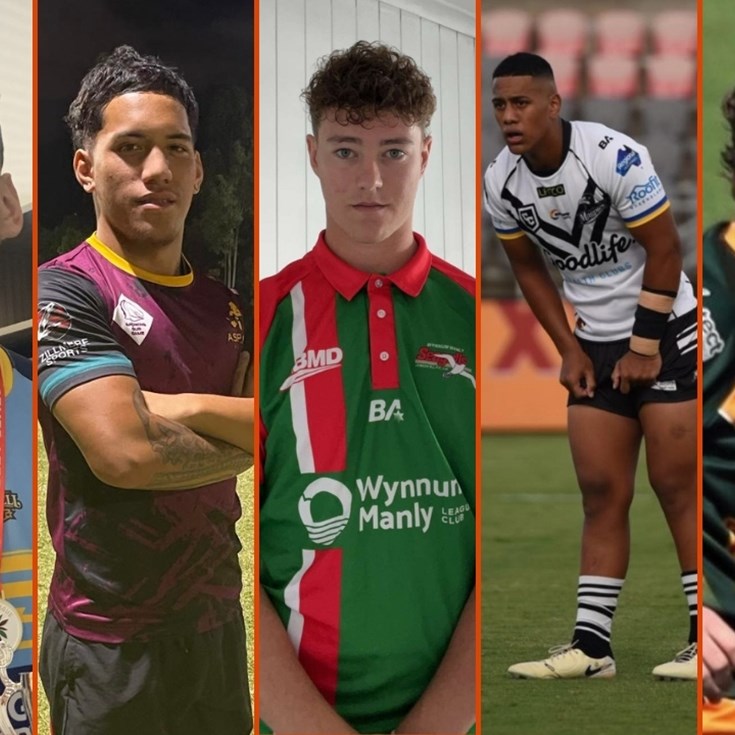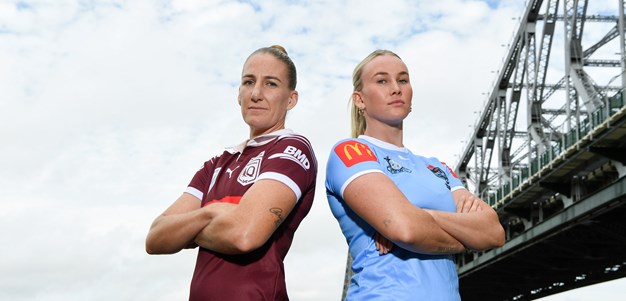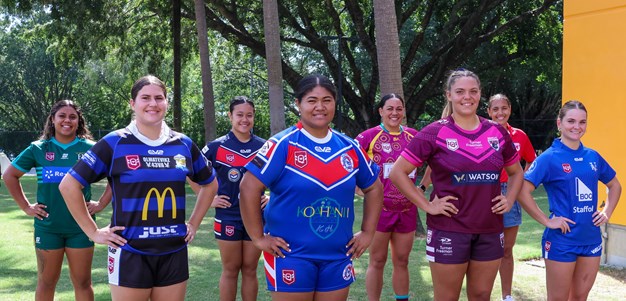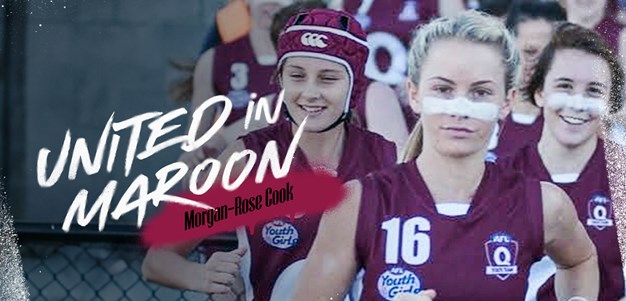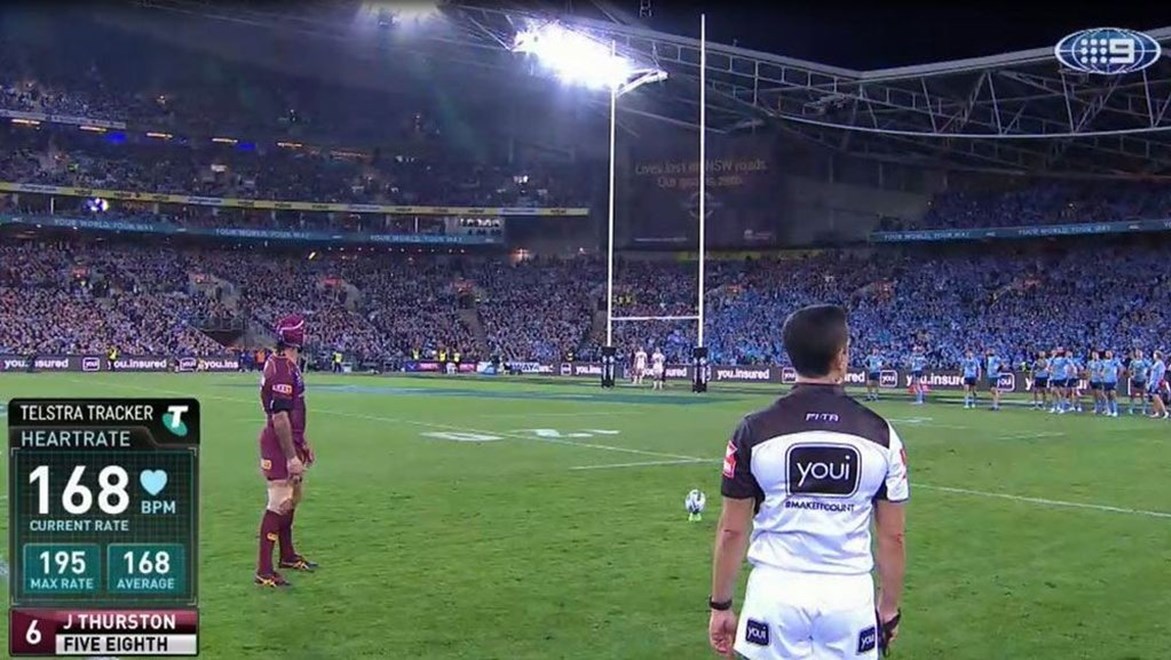

As he lined up the match winning conversion in the final minutes of State of Origin II while trying to ignore the pain of a season ending shoulder injury, Johnathan Thurston's heart rate soared from 149 beats per minute to 170bpm.
Then, as he paused before moving in for the 78th minute sideline attempt at goal that would send the series to a decider at Suncorp Stadium, Thurston's heart rate dramatically plunged to 161bpm before again rising sharply as the ball sailed between the posts.
This remarkable insight into how Thurston coped with the pressure of one of the most important goal kicks of his illustrious career – and his last in a Queensland jersey – was provided by data obtained from tracking devices worn by players in both Origin teams.
For the first time in Australian sport, broadcaster Channel Nine has been able to inform viewers which players ran the fastest, covered the furthest distance or played with the highest intensity, as well as the heart rate of goalkickers, through the introduction of the Telstra Tracker.
The innovation is the result of a collaboration between the NRL, Channel Nine, the RLPA, Telstra, the NSWRL, QRL and Catapult to give fans access to data which has been available to coaches and players since rugby league helped pioneer the use of GPS technology more than a decade ago.
"We are the first sport to do this in Australia and one of the first globally," NRL head of strategy David Silverton said. "We are seen as world leaders in this space from a performance perspective and now we are able to give fans a different way to look at the game."
NRL GM of Innovation Luke Gooden said: "It is an intuitive way and one which helps the fans to understand what makes Cameron Smith so good, how fast Jarryd Hayne really is, how intense it is for a rookie like Tim Glasby to play State of Origin or the pressure Johnathan Thurston is under when he is kicking the winning goal."
Among the new dimension of statistical data available to fans from the opening Origin
matches are:
- NSW halfback Mitchell Pearce running a game high speed of 33.7kph in Origin II – and the second fastest of the series behind Queensland winger Corey Oates (34.3kph in Origin I) – when scoring his 27th minute try;
- Blues hooker Nathan Peats running 16,350.8m (8227.3m in Origin I and 8123.5m in Origin II) – the furthest of any player in the series so far, ahead of Cooper Cronk, James Maloney, Cameron Smith and Boyd Cordner;
- Pearce recording the highest intensity rate of any player in each game, which is measured as metres run per minute. Pearce's intensity was 120.4mpm in Origin I and 112mpm in Origin II;
- Maroons utility Michael Morgan, who set up the winning try in Origin II, recording an intensity of 108.7mpm in that match - the highest of any Queensland player in the series so far;
- NSW centre Jarryd Hayne making 26 sprints totalling 626 metres in Origin II, the furthest sprinting distance of any player. Sprints are measured as a run in which a player's velocity exceeds 20kph. Maroons winger Dane Gagai had a series high 31 sprints in Origin I, and;
- Thurston's average heartrate increasing with each of his three conversions, averaging 149bpm for his first goal kick in the 11th minute, 156bpm for his second in the 54th minute and 166bpm for the match winning shot in the 78th minute.
